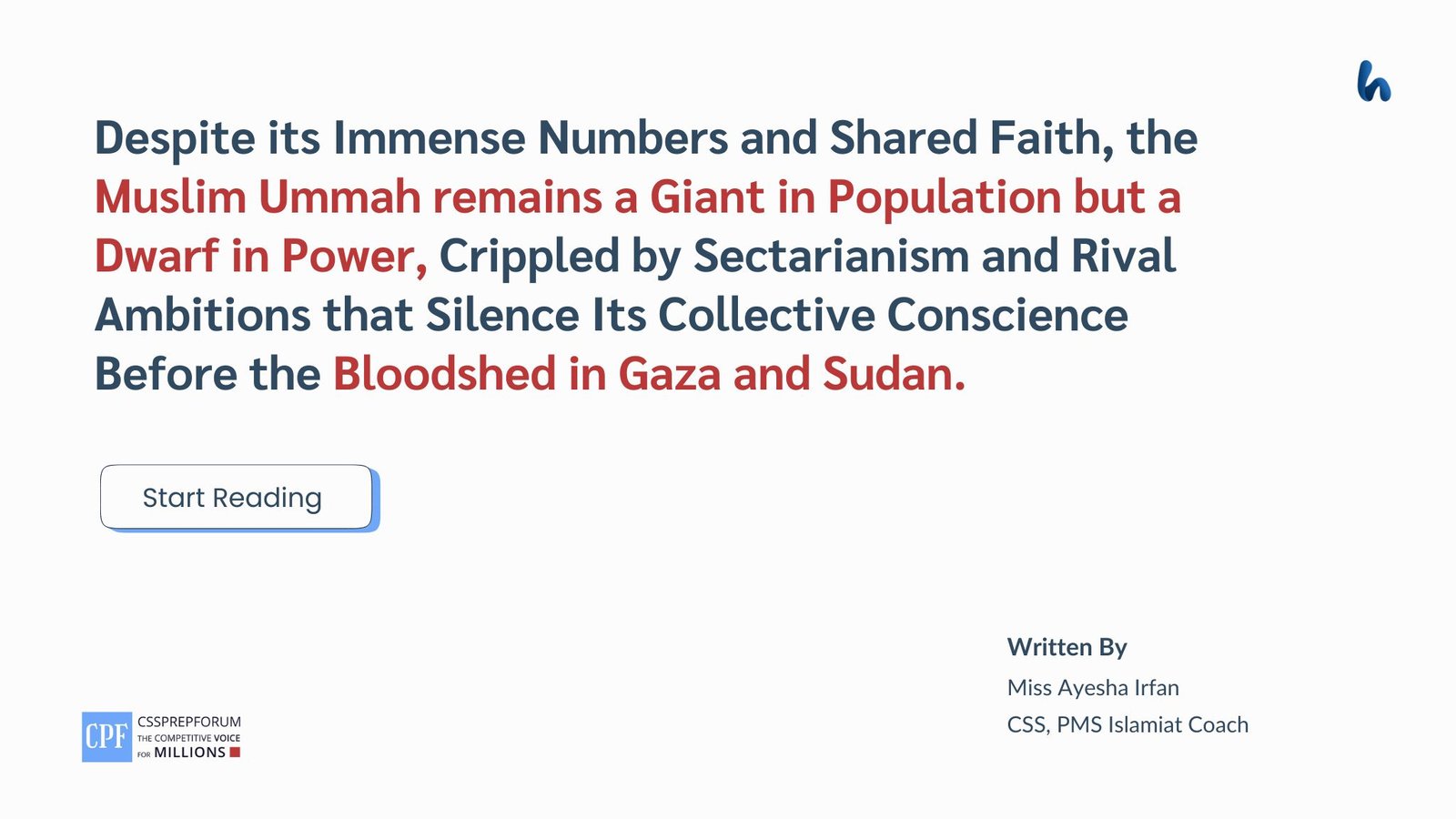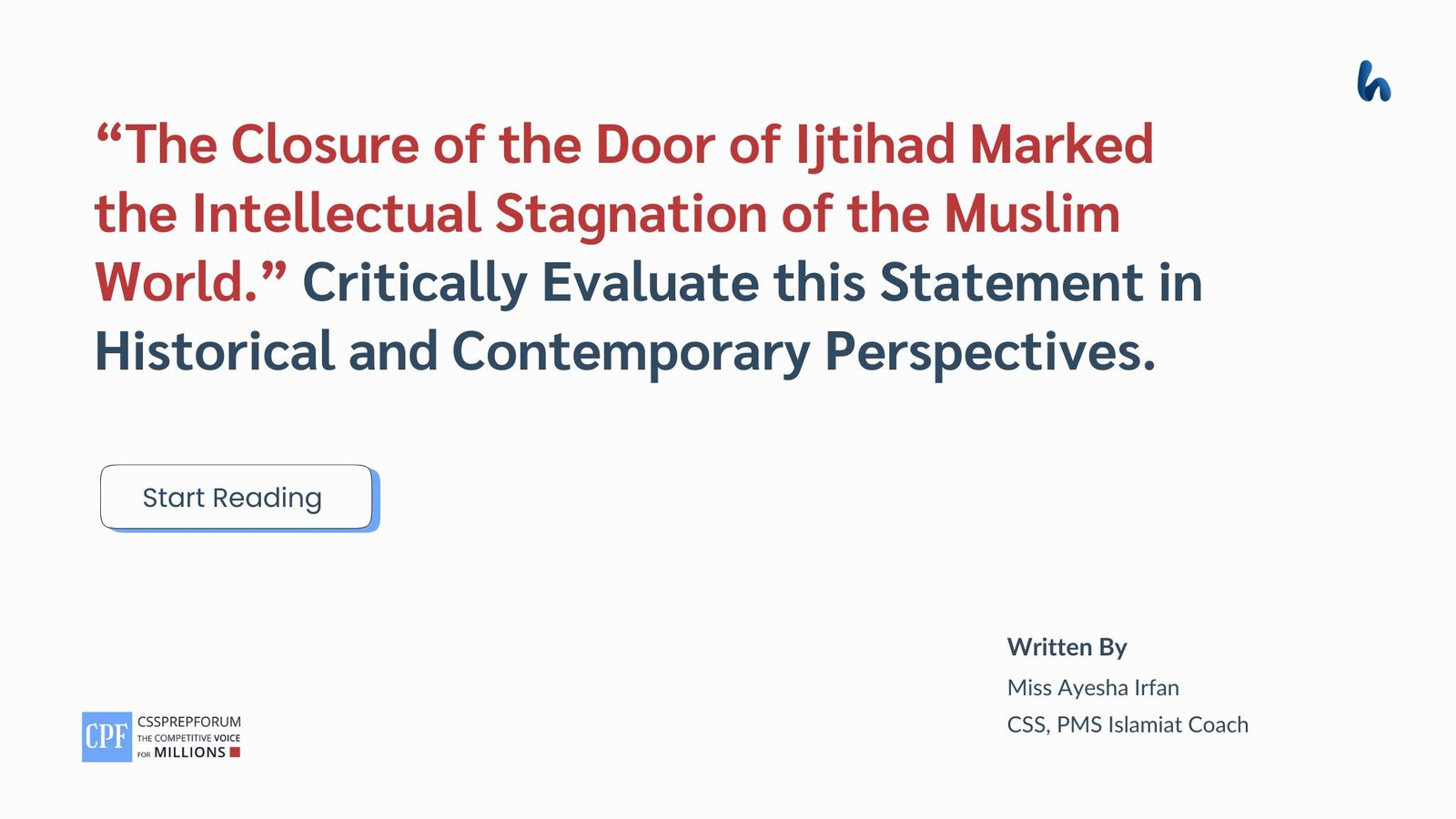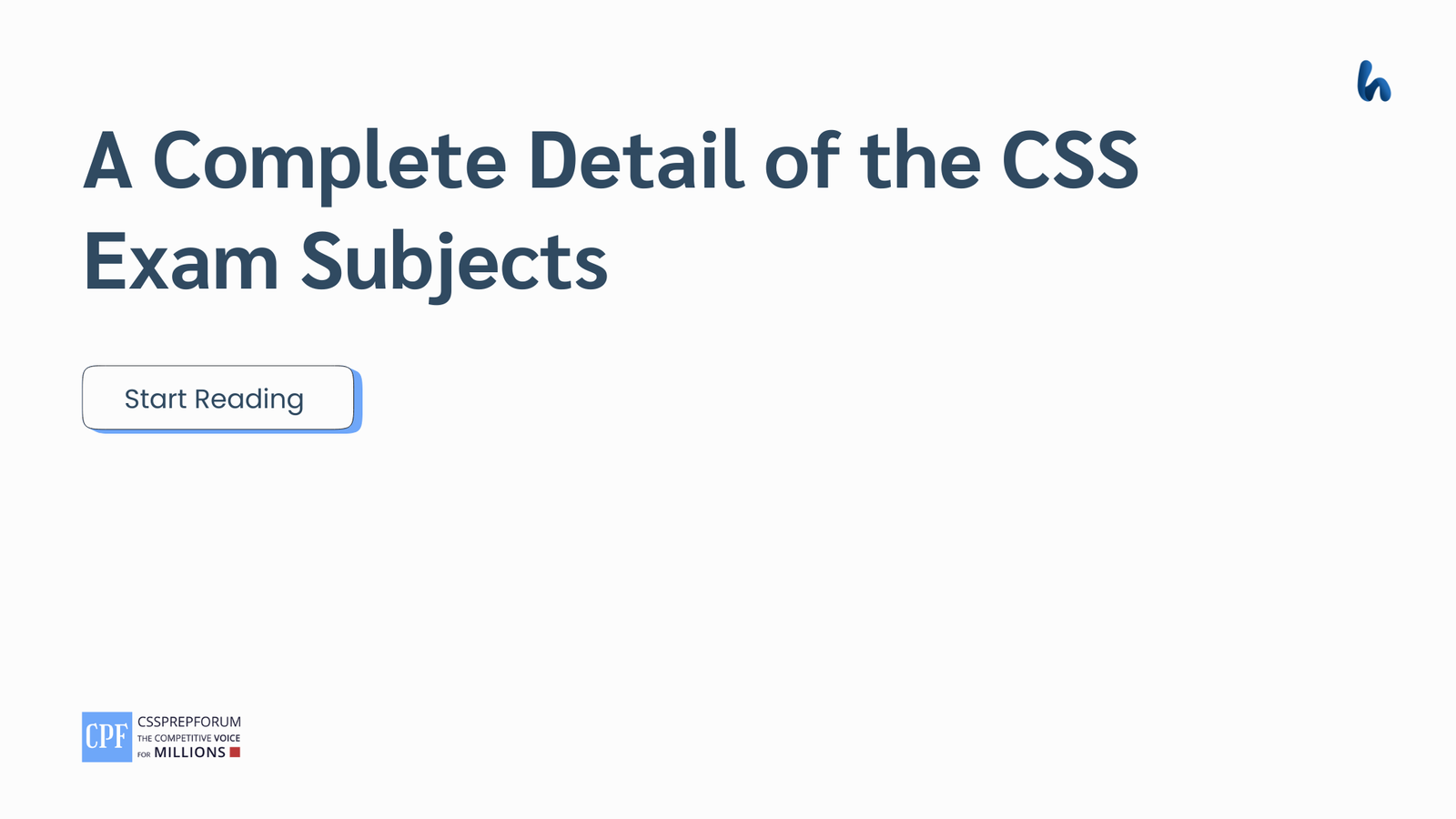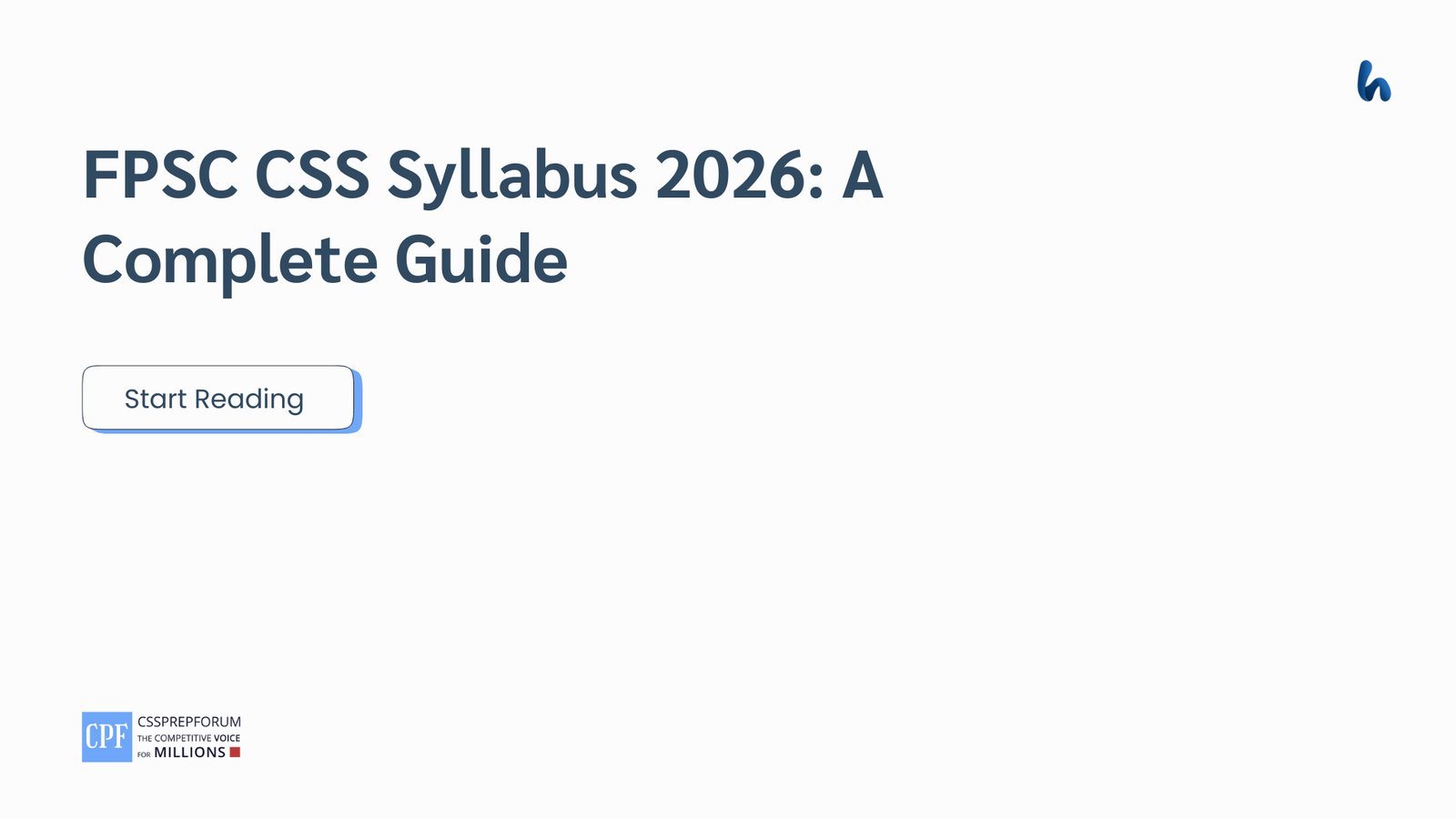CSS Solved Sociology Past Papers | Compare Ibn-e-Khaldun’s Asabiya and Durkheim’s social solidarity based on consonance and dissonance in the major premises of their theories.
The following question of Sociology is attempted on the same pattern, taught by Sir to his students, scoring the highest marks in compulsory subjects for years. This solved past paper question is uploaded to help aspirants understand how to crack a topic or question, how to write relevantly, what coherence is, and how to include and connect ideas, opinions, and suggestions to score the maximum.

Question Breakdown
The aforementioned question requires a brief account of the comparison between Ibn-khaldun’s Asabiah and Durkeim’s social solidarity based on consonance and dissonance in the major premises of their theories.
Outline
1-Introduction
2- Ibn-Khaldun’s Asabiah based on consonance and dissonance
3- Durkheim’s social solidarity is based on consonance and dissonance
4- A comparative analysis of Ibn Khaldun’s Asabiah and Durkeim’s social solidarity
5- Conclusion

Answer to the question
Introduction
Ibn-Khaldun and Emile Durkheim were two prominent sociologists who developed theories on social solidarity and group cohesion. Both have great contributions in the context of Deviance and social integration phenomena. Ibn-Khaldun developed the concept of ‘Asabiah’ while Durkheim proposed the Idea of ‘ social solidarity’. Both concepts depict the ideation of group cohesion but they differ in their major premises and theoretical frameworks. Ibn Khaldun’s theory of Asabiah provides valuable insights into the role of shared values in group cohesion but has certain limitations which overlook other factors that contribute to social solidarity. But at the same time, Durkheim’s theory of social solidarity elaborates the social cohesion by neglecting the social factors and power dynamics that are an essential part of society. The comparison and contrast of Ibn Khaldun’s Asabiah and Durkheim’s social solidarity based on consonance and dissonance in their major premises respectively.
Ibn-Khaldun’s Asabiah based on consonance and dissonance:
Ibn-Khaldun’s concept of A Sabah is significant in sociology and political science which deals with the idea of group cohesion and its role in the rise and fall of civilizations. Asabiah refers to the social solidarity and group cohesion that arises from shared values, beliefs and customs among members of society.

- In the context of Consonance:
The major premise of Ibn Khaldun’s theory of Asabiah is that group cohesion arises from shared values, beliefs and customs which create a sense of common identity and purpose among members of a society. According to Ibn-Khaldun, Asbiah is the driving force behind the rise and fall of civilizations. As long as a society has strong Asabiah, it can maintain its cohesion and prosper. However, when Asabiah weakens, the society becomes vulnerable to external threats and internal conflicts which can lead to its downfall. Ibn-Khaldun argued that Asabiah is strongest in the early stages of a civilisation’s development when members of the society share common values and beliefs. However, as society becomes more complex and diverse, the shared values and beliefs begin to erode leading to the weakening of Asabiah.
- In the context of Dissonance:
One of the limitations of ibn-khaldun’s theory ofAsabiah is that it places too much emphasis on the role of shared values and beliefs and customs in group cohesion and overlooks other factors that can contribute to social solidarity. For example, factors such as economic interdependence, political institutions, and social norms can also play a significant role in group cohesion. Moreover, Ibnkhaldun’s theory has been criticized for being too deterministic in that it assumes that the rise and fall of civilizations are solely determined by the strength of Asabiah. It overlooks other factors such as technological advancement, external factors like colonization and imperialism and natural disasters that can also contribute to the rise and fall of civilizations.

Durkheim’s social solidarity based on consonance and dissonance:
Durkheim’s concept of social solidarity is one of the fundamental concepts in sociology that deals with the idea of group cohesion and the factors that contribute to it. Durkheim identified two types of social solidarity: Mechanical solidarity and Organic solidarity related to Gemeinschaft and Gesellschaft.

- In the context of Consonance:
Durkheim’s major premise of social solidarity is that it arises from the division of labour, which creates interdependence and a sense of collective consciousness among members of society. According to Durkheim, social solidarity is stronger in societies with organic solidarity which is based on the interdependence of individuals with different roles and functions in society. In organic society, individuals are more specialized in their roles and different skill sets which creates a greater sense of interdependence and a stronger social bond. Durkheim argued that in modern industrial societies, organic solidarity is more prevalent than mechanical solidarity, which is based on shared values and beliefs.
- In the context of Dissonance:
One of the limitations of Durkheim’s theory of social solidarity is that it overlooks the role of shared values and beliefs concerning social cohesion. Durkheim’s theory overlooks the role of power dynamics in shaping social relationships and the possibility of conflicts arising from differences in social status and access to resources. Durkheim’s theory has been criticized for not accounting for the role of gender and race in shaping social solidarity. He assumed that individuals in a society have equal access to resources and social status which may not always be the case in reality.

A comparative analysis of Ibn Khaldun’s Asabiah and Durkeim’s social solidarity:
Ibn-khaldun’s concept of Asabiah and Durkheim’s concept of social solidarity are both important theoretical frameworks in sociological conceptualization. While there are similarities and differences between the two concepts in the major premises of their theories.
- In terms of Consonance:
Both ibn Khaldun and Durkheim agree on the importance of group cohesion in shaping relationships. Ibn Khaldun Asabiah argues that group solidarity is based on shared ancestry language and cultural practices as it has implications in the rise and fall of civilization. Similarly, Durkheim’s theory of social solidarity highlights the importance of shared values and beliefs in creating a sense of collective consciousness among members of society. The phenomena of suicide via anomie and integration proclaim the idea from a sociological perspective. Along the same vein, Both ibn Khaldun and Durkheim recognize the role of the division of labour in shaping social relationships. Ibn Khaldun signified the division of labour creates interdependence among the social individuals which strengthens social solidarity while Durkheim’s division of labour interdependence that defines the roles and functions that leads to stronger as well as weak social bonds.
- In terms of Dissonance:
One of the major differences between ibn Khaldun’s theory of Asabiah and Durkheim’s theory of social solidarity is their emphasis on the role of culture and the individual in shaping social relationships. Ibn-Khaldun depicts that group solidarity is based on shared cultural practices and beliefs which are transmitted from generation to generation. Durkheim on the other hand argues that social solidarity is abed on shared values and beliefs that are independent of the individual. Furthermore. Ibn Khaldun’s theory of Asabiah focuses on the importance of leadership in shaping group solidarity. He argued that successful leaders are those who can create a sense of loyalty and commitment among their followers or people. In contrast, Durkheim’s theory of social solidarity emphasizes the role of division of labour and the interdependence of individuals in creating social cohesion.
Another major difference between the two theories is their focus on the role of conflict in shaping social relationships. Ibn Khaldun argues that group solidarity can be bolstered through conflict with other groups while Durkheim argues that conflict undermines social solidarity and leads to social fragmentation.
Quintessentially, Ibn Khaldun’s theory of Asabiah and Durkheim’s theory of social solidarity share some similarities in their emphasis on the role of culture, the individual, leadership and conflict in shaping social relationships. A more advanced approach that takes into account the multiple factors would provide a better understanding of the dynamics of social cohesion and group solidarity.
Conclusion
Extract of the subject is that both Ibnkhaldun and Durkheim’s social solidarity are significant concepts that deal with the idea of group cohesion and the factors that contribute t it. while they share some similarities such as the idea that group cohesion is necessary for the functioning of society, they differ in their major premises and theoretical settings. Ibn Khaldun’s Asabiah is based on the idea that group cohesion arises from shared values beliefs and customs and that this cohesion can lead to the rise and fall of civilizations. On the other hand, Durkheim’s social solidarity is based on the idea that social integration arises from the division of labour which creates interdependence and a sense of collective consciousness. Despite their differences, both concepts offer valuable insights into the nature of group cohesion and the factors that contribute to it. The comparison and contrast of these two concepts can help to gain a comprehensive conceptualization of the complexities of social life and the ways in which different interact to shape the social ecology.
CSS Solved Past Papers’ Essays
Looking for the last ten years of CSS and PMS Solved Essays and want to know how Sir Kazim’s students write and score the highest marks in the essays’ papers? Then, click on the CSS Solved Essays to start reading them.
CSS Solved Essays

CSS Solved General Science & Ability Past Papers
Want to read the last ten years’ General Science & Ability Solved Past Papers to learn how to attempt them and to score high? Let’s click on the link below to read them all freely. All past papers have been solved by Miss Iqra Ali & Dr Nishat Baloch, Pakistan’s top CSS GSA coach having the highest score of their students.
General Science & Ability Solved Past Papers
CSS Solved Pakistan Affairs Past Papers
Want to read CSS Pakistan Affairs Solved Past Papers and learn how to attempt them to score high? Let’s click on the link below to read them all freely. All past papers’ questions have been attempted by Sir Kazim’s students, who scored the highest in the subject.
CSS Solved Pakistan Affairs
CSS Solved International Relations’ Past Papers
Have you opted for International Relations in the CSS examination and want to score above 150? Then, click on the CSS Solved International Relations’ Past Papers by Miss Abeera Fatima, the top IR scorer and the best IR coach in Pakistan.
CSS Solved International Relations Past Papers
Articles Might Interest You!
The following are some of the most important articles for CSS and PMS aspirants. Click on any to start reading.












